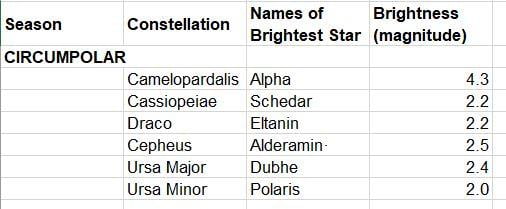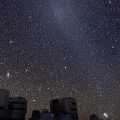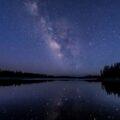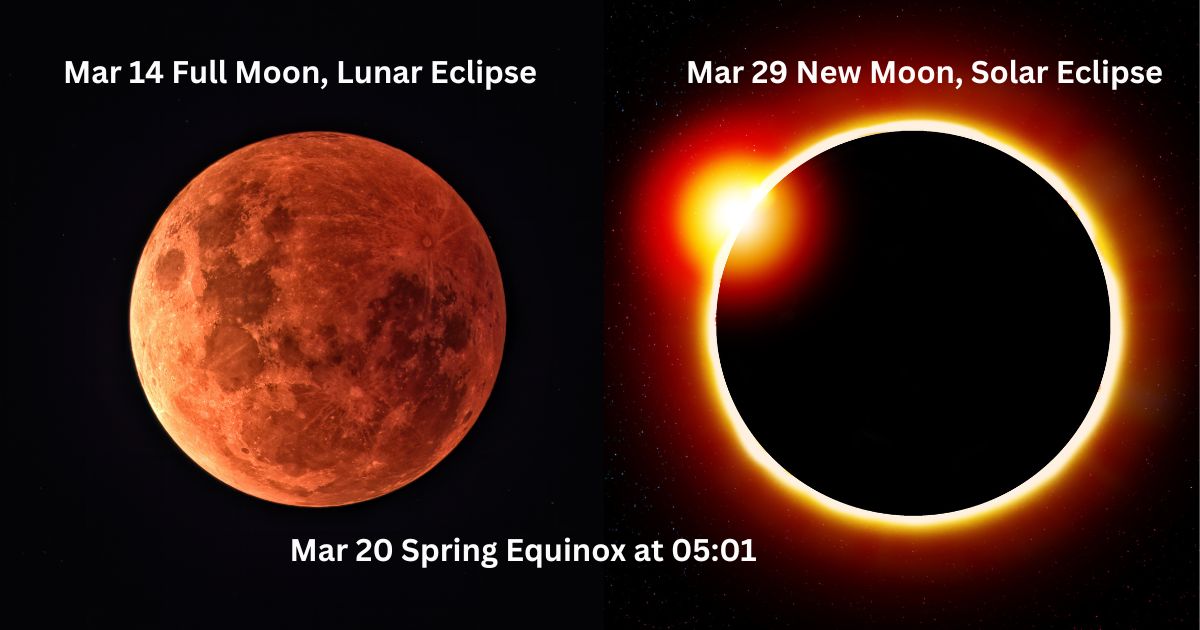For guidance on reading the tables for beginners – please go here
NOTABLE EVENTS
There will be a Lunar Eclipse on the evening of the 17-18th. Although visible across Canada, only the tip of the Moon’s northern limb will enter the Earth’ shadow
The autumn (Autumnal) Equinox is on the 22nd. This means the Sun is above the horizon for ½ the 24 hour day. However since twilight extends into the night, the length of useful daylight will be about 13 hours.
Sep 2 New Moon 21:56
Sep 3 Altair on meridian at 10pm
Sep 4 Mercury at maximum morning Elongation
Sep 8 Saturn at Opposition
Sep 11 First Quarter Moon 02:06
Sep 16 Sun enters Virgo, Deneb on meridian at 10pm
Sep 17 Full Moon 22:34, LUNAR ECLIPSE
Sep 18 Full Moon occults (covers) planet Neptune at about 03:50 (binocular or telescope observation)
Sep 22 Autumn Equinox 08:44
Sep 24 Last Quarter Moon 14:50
MONTHLY TABLE

ECLIPSES:
This is a great year for eclipses with a faint and prominent lunar pair, and a memorable solar eclipse. The solar eclipse will be visible over most of North America, but only a small portion will see the total eclipse spectacle. The rest of the continent will see only a portion of the. Sun covered by the Moon. Therefore we will leave a more detailed discussion for another article in this chapter.
We list Ottawa times (Daylight Saving) to align with the general practice of referencing events to the Nation’s capital.
The September 17-18 lunar eclipse will be be more evident, but it will still need careful observations. The lunar eclipse will not be as prominent as those in previous years. The Moon will only graze the dark umbra with a 3.5% coverage during mid eclipse. Visit www.timeanddate.com/eclipse/lunar/2024-september-18 for more information and diagrams.
Since lunar eclipses are visible from anywhere the Moon is above the horizon, you only need to correct the times for the difference of your time zone from EDT. Then you need to hope for clear skies.
Eclipse Stages EDT Time
- Penumbral Eclipse begins Sep 17 at 8:41:07 pm EDT
- Partial Eclipse begins Sep 17 at 10:12:58 pm EDT
- Maximum Eclipse Sep 17 at 10:44:18 pm EDT
- Partial Eclipse ends Sep 17 at 11:15:38 pm EDT
- Penumbral Eclipse ends Sep 18 at 12:47:27 am EDT
Dates for the Phases of the Moon

Entries are in Eastern Time and only require time zone correction. Do not use the correction from the “Ottawa-Time” table. Saskatchewan and parts of BC and Ontario do not use daylight savings. In these regions, subtract 1-hour from these times from March 10 to November 3.
Planetary Configurations
When at Opposition, planets will appear on the opposite side of the sky from the Sun – very roughly on the meridian at midnight. Conjunctions are when the planet has the same “longitude” as the Sun. A Superior Conjunction is when the planet is on the other side of the Sun, and an Inferior Conjunction is when it is between the Earth and the Sun. Only Mercury and Venus can be at Inferior Conjunction. Maximum elongation is when Mercury and Venus appear farthest from the Sun in our sky. This occurs either in our morning eastern sky (mor.) or our western evening sky (eve.). Do not apply the Ottawa-correction times to the times in this table.

Prominent Constellations by Seasons



Brightest Stars

One of Canada’s foremost writers and educators on astronomical topics, the Almanac has benefited from Robert’s expertise since its inception. Robert is passionate about reducing light pollution and promoting science literacy. He has been an astronomy instructor for our astronauts and he ensures that our section on sunrise and sunset, stargazing, and celestial events is so detailed and extensive it is almost like its own almanac.













